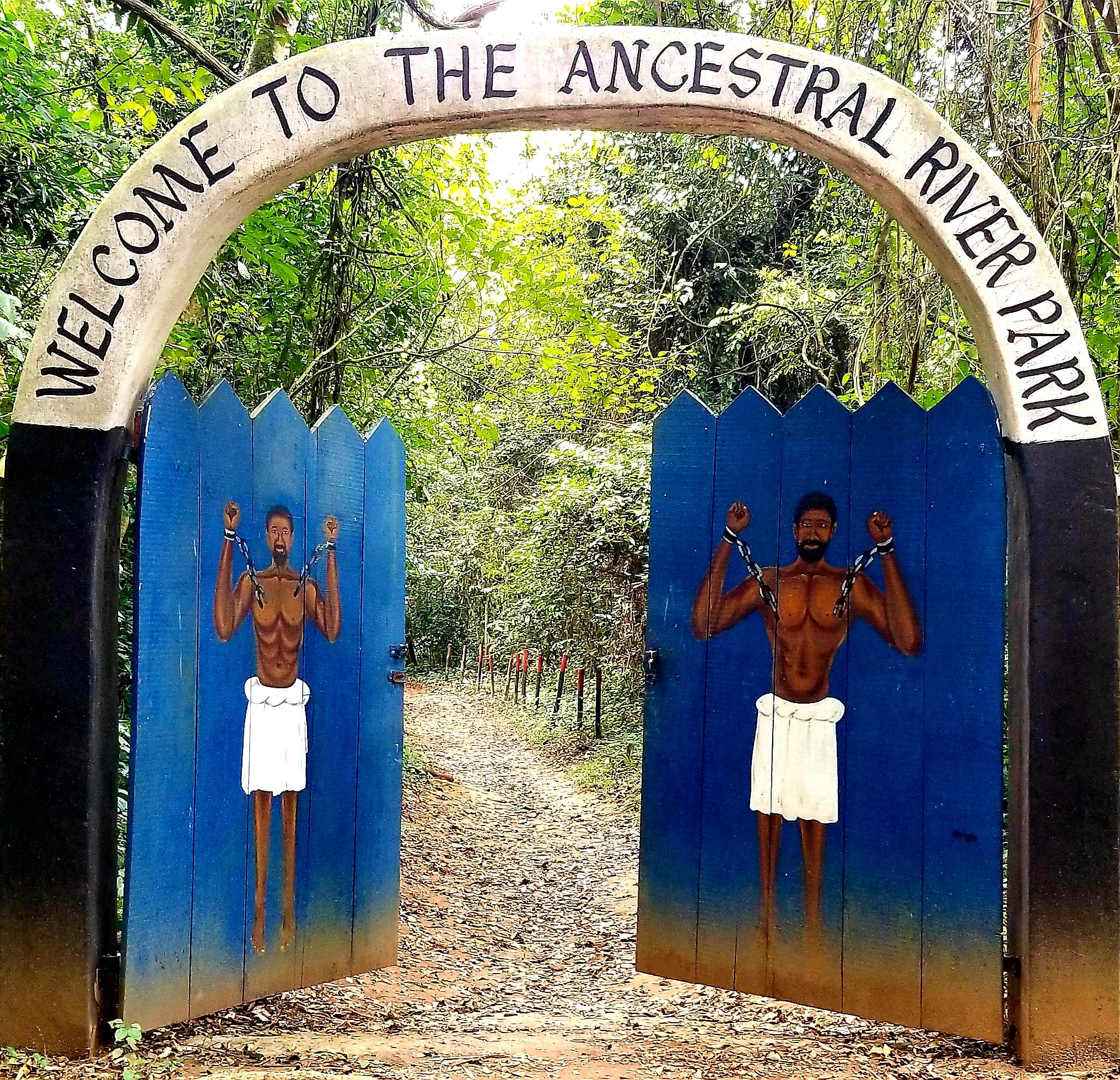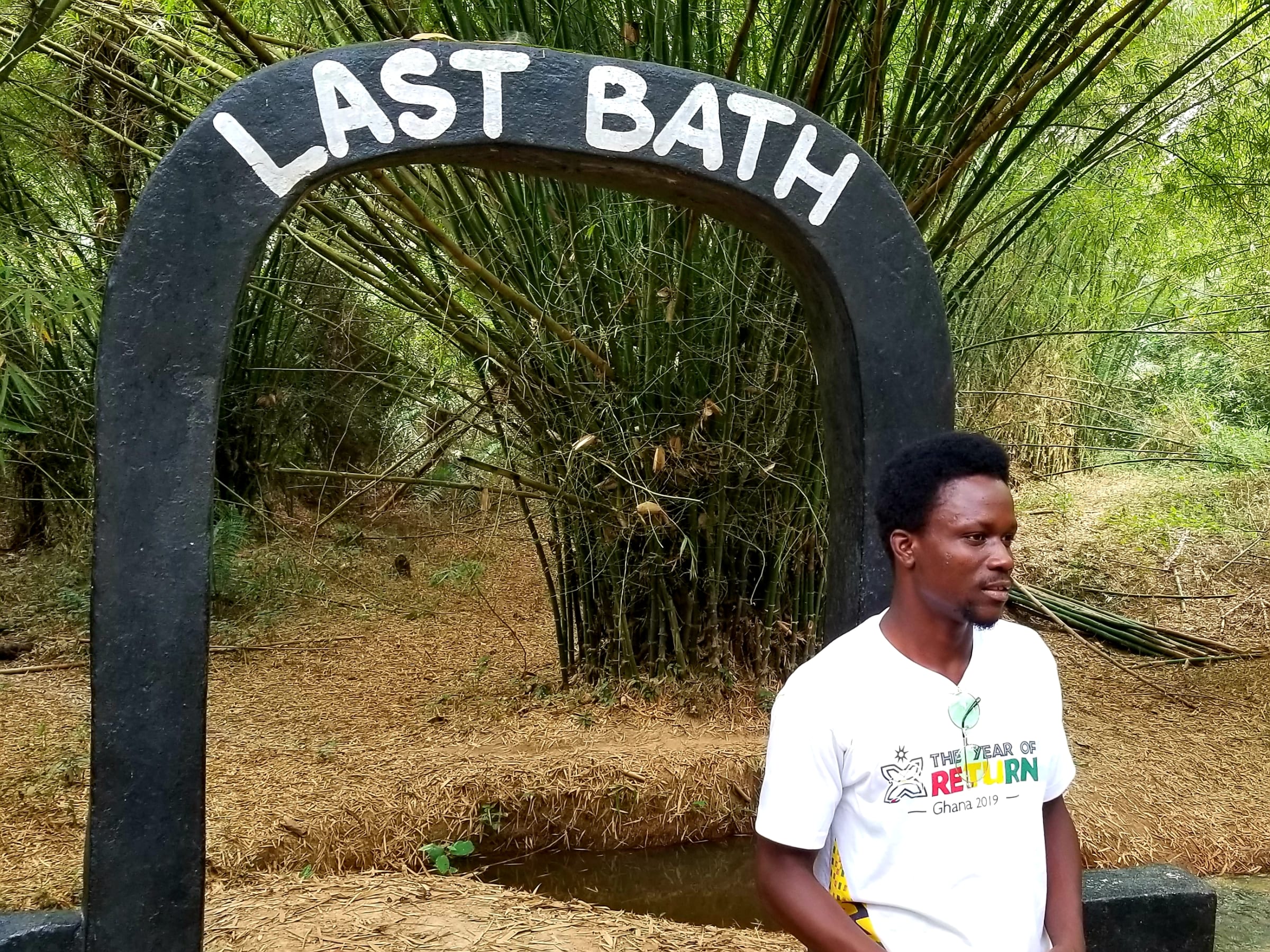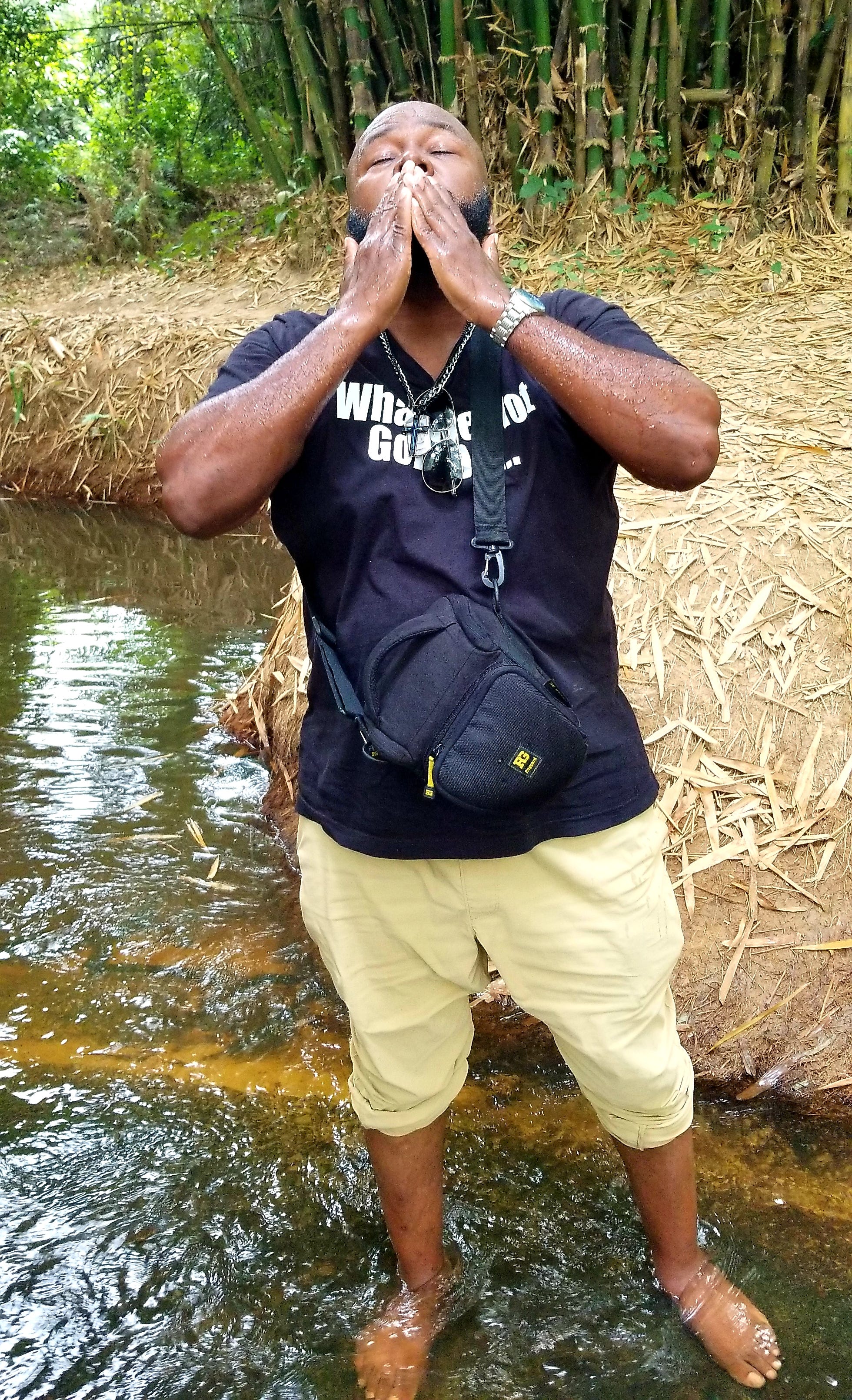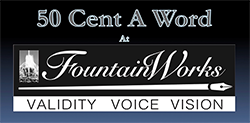By John W. Fountain
At Ghana’s Assin Manso Ancestral Slave River site, an untold number of African slaves took their final bath before continuing their final journey to coastal slave castles into the Transatlantic slave trade.
Those who were the most wounded and bloodied after the sometimes nearly three-month trek in shackles to this point in the journey, were, according to our docent at Slave River, tied to trees for wild animals to devour so that the slave caravan might have safer passage.
At my most deeply spiritual moment, I stood in the swirling waters of Assin Manso slave river, where I was suddenly flooded with a strange and palpable sense of connectedness to my ancestors. I was also struck in that moment by a deeply disturbing, yet intangible portrait, that suddenly unveiled like a curtain before my eyes.
And in that picture of grotesque horror, I saw no white colonizers leading chained, bloodied and brutalized African slaves. Only Africans.
I stood in the river, salted, stinging tears falling from my eyes as I realized in a way I had not before that moment that my ancestors were sold into slavery by their own brothers.
I also came to realize that very much alive in many of the descendants of those who had sold my ancestors—whether they were now ignorant or knowledgeable of this past transgression—was a fairly consistent detectable disdain for me and African-American returnees who had finally come back home after slavery’s time, back to the scene of that historic crime.
I was enlightened by the clarity gained during my time in Ghana that I am undeniably African and unapologetically American. And that I embody the full empowerment of the compound word: African-American.
That I am American by blood and African by blood. That Africa is my ancestral Motherland. But America is my Homeland.
And at last, as a Black man, I am at peace with that.
A professor at Roosevelt University, John W. Fountain will present his stirring interactive multimedia exhibit on his Fulbright year in Ghana at the Fulbright Association's Annual 47 conference in Washington, D.C., Oct. 25-26. Fountain was a 2021-22 Fulbright Scholar to Ghana.
#Facon2024
Email: Author@johnwfountain.com

















Wash Over Me Slave River: Portraits of Ghana